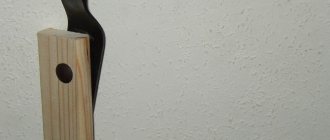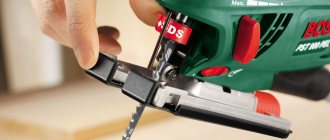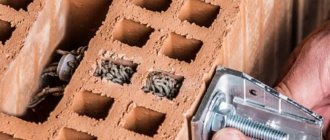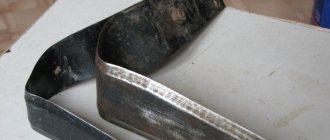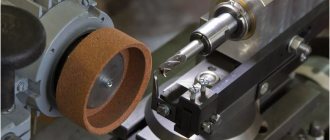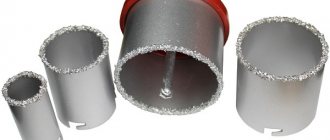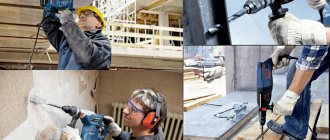The popularity of the Fokin flat cutter among Russian summer residents is growing every year.
The flat cutter is named after its creator, Vladimir Fokin. This tool for tillage is recognized as an invention and has received four RF Patents and, in addition, has been repeatedly noted at International exhibitions.
The work of the Fokin flat cutter is carried out in accordance with the main principle of natural agriculture - no-moldboard tillage , in which the structure of the soil does not change and the activity of beneficial microorganisms is not disrupted.
Working with this tool is much more convenient than using a traditional pitchfork or shovel: your joints and spine will only thank you for such a physiological load. The unique design of the Fokin flat cutter makes it a universal gardener's assistant and a complete replacement for various gardening tools.
The cutting element of the Fokin flat cutter is produced in two sizes: large and small.
It usually contains two sharp edges, but a modified version of the tool also has a third sharpened edge, making it easier for left-handed people to use. With the help of sharpened “toe” and “heel” and its flat surface, a wide variety of garden work is carried out.
How to use a Fokina flat cutter: loosening the soil
Loosening the soil with a Fokina flat cutter. First stage.
The vast majority of work with a Fokin flat cutter includes an operation such as loosening.
It is carried out in two stages. First, the cutting element is buried at a slight angle (almost vertically) at a certain distance and pulled towards itself, lightly pressing it against the soil. Then the handle is placed in the hands in the same way as a rake is usually held, the cutting element is buried flat (parallel to the top layer of soil) and the tool is pulled towards itself with a smooth movement.
Due to the fact that the blade and guide plane form a 90-degree angle, the tool moves easily in the soil without causing the unwanted effect of raking the soil.
Using a flat cutter you can loosen the soil to a depth of 15 centimeters. However, the effectiveness of such work is reduced on heavy clay soils, so on these types of soil it is preferable to use Strizh or Aist flat cutters.
Small weed
The ten-centimeter blade with a width of 1.8 cm makes the small weed the most compact among hand cultivators. Feature of the product: only one sidewall and end are sharpened.
The weed, like a small flat cutter, is used for weeding between rows. Thanks to its small size, it is capable of clearing narrow spaces and between closely planted plants with pinpoint precision.
The soil processed using flat cutters is saturated with oxygen, retains a loose structure, and does not lose moisture and nutrients. Beneficial insects and microorganisms remain in the soil, its fertility increases.
- Author: Inna Kiseleva
Formation of ridges
The Fokina flat cutter does an excellent job of forming beds.
To carry out this operation, you need to stand on one side of it and position the blade of the tool so that the “toe” points to the side. Next, the cutting element is buried flat in the soil and they begin to level the soil surface on the opposite side.
Often, large clods of earth remain in the formed bed, which need to be broken up and leveled. In this case, the flat cutter is laid parallel to the bed without digging and makes a back-and-forth motion with it, like a rake.
Big blanket
The cloth is designed for quick and easy weeding. A large product of this type differs from other hand cultivators by the presence of a long (22 cm) blade, which has a special shape and is smaller than the standard width (2 cm).
The design allows you to conveniently, quickly and efficiently weed large areas of land. The tool is used for working between rows of those garden crops that require a large distance from one plant to another (potatoes, sunflowers, pumpkin, corn).
Loosening and removing weeds between rows
Loosening the soil with a Fokina flat cutter. Second phase.
If it is necessary to lime a young weed, then simply cut it at the level of the soil surface, placing the Fokin flat cutter in the flat position. To get rid of a weed with a more powerful root system, you should bury the tool 3-5 centimeters and pull it out of the soil with two or three sharp and strong movements.
For working with a Fokin flat cutter between plants in closely spaced rows in open ground, a tool with a long handle but a small cutting element is best suited, and in greenhouses and greenhouses it is more convenient to use a flat cutter with a shortened handle.
Moreover, the destruction of weeds even from the surface of a large garden bed takes only a couple of minutes, which allows you to carry out weeding every 3-4 days and quickly get rid of even such persistent and tenacious weeds as gooseberry or wheatgrass.
Types of flat cutters
There are several types of tools that are designed to make work on the site easier.
Large and small flat cutter
Large and small flat cutter
They are usually offered as a set. This set of hand tools is designed for daily work on the site. A small flat cutter is used for loosening beds, trimming strawberry tendrils, and thinning out dense shoots. A large flat cutter is used when processing beds before planting, hilling up potatoes, destroying weeds and mowing the grass.
Powerful
Powerful
A type of flat cutter, the mighty one, is used for hilling high beds. This model has a wide blade, with which you can hill up plants efficiently and quickly.
Large and small blankets
Large and small pads
Large and small blankets. This equipment is used for quickly weeding large areas. The weeder blades differ from traditional blades - they are narrower and longer, making weeding more efficient.
Sturdy
Sturdy
Strong - a type of flat cutter is used when developing virgin lands, on clay and heavy soils. The blade of the tool is short and powerful, which greatly facilitates the work of the summer resident.
You need to purchase several flat cutters that you will need to work in the garden. When choosing, you should pay attention to the area of the site and the structure of the soil.
Mowing weeds
To control weeds in wide areas, a Fokin flat cutter works in the same way as a scythe. Of course, it is not suitable for large areas, but you can treat a small area or hard-to-reach places that are difficult to reach with a regular scythe without any problems.
Before you start mowing, you should assemble the tool using the top hole on the cutting element for a person of average height and the bottom hole for a person of below average height.
After mowing, you can rake the grass into a pile and transfer it to the compost, holding the tool in your hands like a pitchfork.
A tool can only be appreciated if it is used correctly . Many gardeners, when purchasing it, underestimate it and return to the usual shovel and hoe. What's the matter?
LiveInternetLiveInternet
History of invention
The modern hand-held flat cutter was invented by Vladimir Vasilyevich Fokin, a man who devoted himself completely to any business, no matter what he did. He worked at the plant, making a significant contribution to it with his rationalization proposals, as a responsible and hardworking person.
On the collective farm, Vladimir Vasilyevich performed many duties, worked as a journalist for the Leninets newspaper, communicating with agricultural workers during his service. In addition to work matters, Vladimir Fokin loved to work on the land; from his youth he was interested in this fascinating, and at the same time physically difficult occupation, and had extensive experience in this field.
But life changed after a heart attack, when Vladimir Vasilyevich worked in the city of Sudogda in a highly paid but very harmful job as an operator of a fiberglass production workshop. Disability crossed out active work; physically difficult tasks were no longer possible. And the previously thought out ideas of making labor easier on the land and the agricultural tools improved by Fokin were not so easy to work with that you could do what you loved.
However, long and persistent study of garden tools, many attempts to make an easy-to-use and effective tool for cultivating the land were crowned with success, the result of which is the Fokina manual flat cutter. With the help of this tool, Vladimir Fokin could cultivate a plot of 40 acres. This invention of Vladimir Vasilyevich now helps millions of gardeners to significantly facilitate work on the land, significantly reducing physical activity, while at the same time, when using natural agricultural technology, soil fertility increases, and therefore productivity.
What is a manual Fokina flat cutter?
The Fokina flat cutter is an unusual gardening tool; in addition to its main purpose - weeding and loosening, it can perform up to two dozen operations on the ground. The main work of the flat cutter is to cut or pull out weeds when its blade passes parallel to the soil surface at a depth of 2 to 5 cm. That is, the top layer of soil remains in place and is loosened without turning the layer. And such cultivation of the soil preserves its structure and is harmless to the inhabitants of the living world of the soil, requiring less effort and time. However, a flat cutter is not a traditional farming tool and its use instead of a hoe only makes sense when weeding, and in dense, structureless soil (due to digging with the turnover of the layer), it will not work very easily. On soil that has a porous structure, as well as a mulching ground cover layer, it is easier and more efficient to work with a flat cutter, while at the same time, using a flat cutter in combination with other natural farming methods improves the condition and increases the fertility of the soil.
Fokin's manual flat-cutter consists of a plate bent in the form of a bracket at certain angles, the three cutting surfaces of which are sharpened. The blades of the cutting part of the flat cutter should always be sharpened to reduce resistance to the soil and the plants being cut.
An exception to sharp sharpening of the blade may be the case when the weeds are young and their stems have not yet become strong, and the flat cutter does not cut them, but pulls them out along with the roots.
At this time, there are six varieties of Fokin flat cutters: these are small, large flat cutters, “Krepysh”, “Moguschnik”, “Small Polotik” and “Big Polotik”. The most popular are two flat cutters, which are included in the “Universal Kit”: a small flat cutter is designed for quickly and accurately weeding beds, thinning out dense seedlings, and cracking the soil; large - for forming, preparing and hilling beds, weeding, mowing grass, etc.
The Krepysh flat cutter has the same dimensions as a large flat cutter, but has a shortened blade, making it easier for them to work on heavy clay soils. “Moguschnik” has a wider blade than a large flat cutter and is used for high hilling of plants. “Weeders” are analogues of small and large flat cutters, respectively, but their blades are longer and narrower and are used for quick weeding of an area.
The flat cutter is attached to a flat-shaped wooden handle, the cross section is a rectangle with rounded edges. Such a handle allows you to easily work with a flat cutter, holding it in any required position, and without rubbing calluses.
A large flat cutter should be mounted on the handle so that it is convenient for them to work. It can be fixed in two positions by changing the angle of inclination, using the holes existing in it and the handle, and relative to its location on the handle in two more - inside or outside, which will make it easier for left-handed people.
Correct operation of a flat cutter is a movement parallel to the surface of the earth. If the angle of inclination of the flat cutter when moving towards you is directed upward, towards the surface of the earth and you have to bend over for normal operation, you need to change the angle of attachment - it will decrease relative to the handle, and if the blade tends downward when pulled, burrowing into the ground, then you need to fasten the flat cutter at a large angle to cuttings
When working with a Fokina flat cutter, your back should be straight, with a slight tilt of the body, and you should hold the handle of the flat cutter so that your thumbs “look” up. In this case, working with a flat cutter will be correct and will minimize physical stress.
Types of work performed by a flat cutter
Depending on the position of the cutting edges of the flat cutter, it can perform various operations:
♦ weeding and loosening of beds is carried out using a wide edge of the blade - it enters the soil at the required distance (up to 1 meter) and is pulled towards itself in one movement. Weeding is recommended to be done at the stage when weeds begin to grow, without allowing them to grow, this makes it much easier and easier to deal with them. ♦ the formation of beds occurs as follows: onto a plot of land loosened by a flat cutter, soil is raked from the rows with an inverted flat cutter. That is, the shorter edge of the blade “looks” down and the blade becomes almost perpendicular to the surface of the earth, due to which, when the flat cutter is pulled through, the soil is raked. This operation is performed alternately on both sides of the bed. ♦ leveling the soil surface is carried out by movements either towards oneself or away from oneself with an inverted flat cutter without applying significant effort. Also, in this way, the grooves with the sown seeds are filled with soil. ♦ blows with the narrowest cutting edge of the flat cutter produce deep loosening of the soil, as when working with a plow. ♦ when pulling a narrow edge of a blade buried into the soil, it is cracked, improving aeration, and also thins out dense crops. In the formed bed, grooves are cut for sowing using this method. ♦ if necessary, break up large clods of soil, this is done with the heel of a flat cutter or the cutting edges of the blade. ♦ in order to mow an adult and strong weed, make a blow at the bend of the flat cutter, where the vertical part turns into a horizontal one. And to “digg up” a plant, the flat cutter is buried with the narrow part of the blade under the root and, like a shovel, it is pulled out along with the root (if the root system is shallow and fibrous). You can mow with a flat cutter on small areas of land, or where it is impossible to use a scythe. You can work with one edge or two edges alternately in both directions. ♦ hilling is carried out similarly to the formation of beds; the soil between the rows is raked first on one side of the row, then on the other.
Also, with a Fokin flat cutter you can trim strawberry mustaches, work with hay, use it as a fork, shovel, rake...
Of course, if you need to dig holes, weed too large areas, mow grass in meadows, make hay, etc., then it makes no sense to use a flat cutter. It is not intended for this, although it has such capabilities, but it is worth following common mind and logic. To weed large areas, you can use a weeder with a wheel and a cutting knife - the same as a flat cutter, but already mechanized :)
When using a flat cutter, you need to experiment with how it is more convenient, how best to use it in a given case. Only practice can show all the positive aspects of a flat cutter in comparison with hoes and shovels.
A manual flat cutter is widely used in natural agriculture, facilitating the work of the farmer, thanks to minimal intervention during soil cultivation, it allows you to preserve, restore and increase the fertility of our land - the breadwinner.
More details about the Fokin flat cutter are discussed in this video.
You can purchase Fokin flat cutters from Organic Farming Clubs in your city or region, which will allow you to protect yourself from counterfeits.
https://prirodnoezemledelie.com/ploskorez-fokina/
Basic mistakes when working with a flat cutter
Let's look at the main mistakes that are made when working with a flat cutter.
The main mistake is that, out of habit, we work inclined, bending the spine, thereby negating the main advantage of the tool . When working correctly with a flat cutter, only a slight tilt of the body is allowed. To achieve this position, you need to choose an option for attaching the flat cutter to the handle in proportion to your height.
The second mistake is that some gardeners place the flat cutter on a round handle.
If you pay attention, you will see that the mount seems to be twisted in relation to the blade at an angle of 45 degrees. Due to this, the flat cutter is lowered into the ground at an angle, easily cutting off the roots of plants in the soil. So, this angle of inclination is maintained automatically only when working with a flat cutter with a flat handle. If the handle is round, then the flat cutter rotates, thereby complicating your work.
And finally, it is necessary that the flat cutter be well sharpened. Working with a dull flat cutter will only create additional difficulties for yourself by creating calluses.
When purchasing a Fokina flat cutter, do not forget to make sure that what you are looking at is not a fake.
How to distinguish an original from a fake
The first thing to remember: drawings of a flat cutter are not distributed, which means it is impossible to make it yourself. Only family members of the inventor have a license to produce the instrument.
Other manufacturers produce flat-cutters that look similar in appearance, but they are inconvenient to work with. Sometimes low-quality steel is used, as a result of which the flat cutter quickly bends and even breaks.
The main differences between the original Fokin flat cutter and the fake:
- The metal part has a stamp in the form of a capital letter "F". A fake does not have such a mark.
- The color of the flat cutter itself is black. The original instrument is not painted in other colors.
- The original is slightly rough to the touch, the fake is most often smooth.
- The original flat cutter is sold already sharpened. Counterfeits are most often sold with a blunt edge.
- The original flat cutter is springy, but bends. The fake is either made of soft steel and bends like a rod, or hard and does not bend.
- This tool does not rust - it is made of stainless steel.
- The original flat cutter comes with bolts and nuts for attaching to the handle.
The last distinguishing feature is that the package will contain a brochure from the inventor entitled “To the Earth with Science.” This is a detailed, 64-page instruction manual for setting up and working with a flat cutter.
The cuttings are included only with a set of two flat cutters. Their length is 120 to 130 cm. They can also be purchased separately.
Tool assembly rules
A simple mechanism should be correctly adjusted before work to suit your height and physical capabilities. The effectiveness of the actions it performs depends on how the Fokin flat cutter is assembled. The length of the handle, the sharpness of the sharpening and the angle of inclination of the steel tip are important. If everything is assembled correctly, the blade does not get stuck in the ground, and the worker’s back is not overstrained.
What you should pay attention to when assembling the flat cutter:
- For right-handers, the steel tip should be turned with its sharp part to the right relative to the handle, for left-handers - to the left.
- A physically strong person can increase the load by attaching a metal attachment to the inside of the handle. Others should reduce the working area of the steel plane by attaching the tip to the outside of the wooden base. In the second case, the tool will lift less earth.
- Screw the blade at a slight angle towards you onto the handle. Try it in action. If the tool gets stuck in the ground, change the angle. Choose the one that's perfect for you. How best to set it up so that working with a flat cutter is easy is a matter of practice for each individual person.
A large flat cutter for a tall person can be attached in the direction of the handle. The main thing is that the summer resident does not bend over too much while working. Therefore, the wooden handle for all types of this tool must be long enough.
If necessary, you can use the Fokin flat cutter to perform other work in the garden or vegetable garden, using the instructions for use, which necessarily accompanies the original product in the package.
To assemble the tool, use a handle 30-40 cm long below your height.

